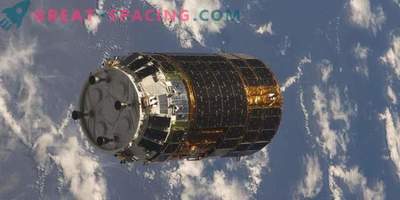
The growing problem of space junk may have a downside. What if we can recycle garbage into components for a mission to the Red Planet?
Nearly 60 years of space exploration have brought us a sad legacy - a chain of orbital debris surrounding Earth. Some parts are small as a drop of paint, while others represent the remains of dead satellites, with long-empty fuel tanks.
According to NASA estimates, there are more than half a million fragments that sometimes pose threats to the International Space Station (ISS) or satellites. Clashes have happened before and it is very likely that this may happen again.
Although space junk is a well-known problem, ideas for dealing with it are always reduced to another problem — economic assistance. That is why Tom Murkusik, CEO of the space launch company Firefly Space Systems, suggests reworking some of the dead space satellites and using them to fly to Mars.
Realizing that nuts, bolts and electronics are things that a Martian colony will need, Marcusick suggests that the spacecraft tow the non-operational satellites from Earth's orbit. And to reduce fuel costs, you can use solar electric self-propelled tugs. They would leave them near Phobos, the moon of Mars, where people could disassemble and use the raw materials. According to his estimates, there are several hundreds of non-working satellites suitable for reuse in space. Since these components of space debris are already in space, there is no need for the costs associated with launching materials from the earth's surface. “They can be assembled and converted into something like hardware, such as the Pathfinder (fixed Martian station) that humans on Mars will need,” said Marcusik. He compares this with scattering a bucket with a Lego designer and reassembling it. He also adds that the task of re-assembling from existing charts may even become a competition for colleges or another event to increase attention to the process.

The only question is who will pay for such a scheme. Many companies have identified a desire to work with space junk. But where there is no jurisdiction and no immediate threat, there is always the problem of finding funds.
“The problem of space junk resembles a story with global warming. It’s very hard to get the government to fund such an event, ”said Jason Forshaw, a researcher at the University of Surrey, which is on the United Kingdom’s RemoveDEBRIS mission. Next year a launch is expected with the ISS, which could test the operation of the harpoons, nets and sails in the process of taking out space debris.
“We are trying to raise awareness that space is a part of the Earth’s environment. This space also needs cleaning. And the longer we pull this decision, the worse it will be, ”Forshaw said in an e-mail, suggesting that an intergovernmental organization might be able to take responsibility. He said that among the 7,000 tons of space junk there are many valuable acquisitions for different technologies. Markusik is confident that government organizations will be interested in paying for cleaning garbage, if there is a good reason. But before going to Mars, he needs to raise funds for a rocket that will allow his company to enter the launch market. The Firefly Alpha rocket is about to launch light satellites (less than 1000 kg) into space and some CubeSats satellites, potentially moving in one direction to gain more revenue.
His project is estimated at $ 100 million, and so far he has received about a third of the amount from venture investors. New admission in 25 million dollars was late, as some of the parties have beaten out at the last minute.

“I am doing business very quickly, so the cost of a mistake is very high. To take a break, throw sand into the gear, ”Marcusik said, adding that he had to fire half of his staff when looking for other partners.
In favor of Marcusick says that most satellites have standard parts, which they once attached to the rocket. This means that even if the satellites were not developed for transportation to Mars, as long as the towing vehicle uses a standard fixture, they can be delivered to the site. DARPA (Defense Advanced Research Projects Agency - Agency for Advanced Defense Research Projects) - an advanced research branch of the US Department of Defense - is going to use these standard applications.
The new robotic geostationary satellite service (RSGS) DARPA, which could fly as early as 2021, offers 4 ways to service non-working satellites. You can dock and do an ultra-thorough inspection, push the satellites to a different orbit, repair or even attach new sensors to the satellite in order to revive it. DARPA is now looking for a commercial partner to help with target geosynchronous satellites that include 50-60 US government satellites. This was announced by the head of the program DARPA for RSGS Gordon Rosler. After launching RSGS, “we will have 6 or 9 months to rent or borrow a satellite from a commercial operator or government. We will do more and more complex operations in order not only to check all our software and components, but also to confirm the qualifications of the team. ”
The RSGS has taken part of the Phoenix satellite program, which is no longer in service, but focuses on other technologies. An example would be a useful orbital delivery system. This is a removable payload that can travel with a geostationary satellite of a rocket, and then it starts on its own. Testing of the Phoenix will continue in space in 2017.











































